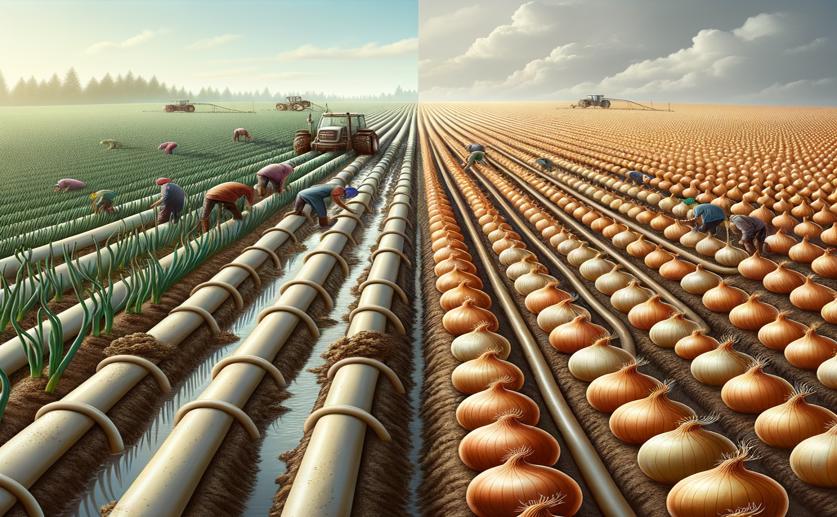
Comparing Onion Farming Success with and without Drip Irrigation
Jim Crocker
4th April, 2024

Image Source: Natural Science News, 2024
Key Findings
- In Maharashtra, India, farmers using drip irrigation for onions are more efficient than those not using it
- Drip irrigation adopters have higher incomes, use less water and labor, but more fertilizer
- Education, farming experience, and extension contact positively impact the efficiency of drip irrigation users
VegetablesSustainabilityAgriculture
References
Main Study
1) Efficiency dynamics among onion growers in Maharashtra: a comparative analysis of drip irrigation adopters and non-adopters
Published 3rd April, 2024
https://doi.org/10.1186/s12870-024-04875-2
Related Studies
2) Analysis of technical efficiency of irrigated onion (Allium cepa L.) production in North Gondar Zone of amhara regional state, Ethiopia.



 21st March, 2024 | Jenn Hoskins
21st March, 2024 | Jenn Hoskins